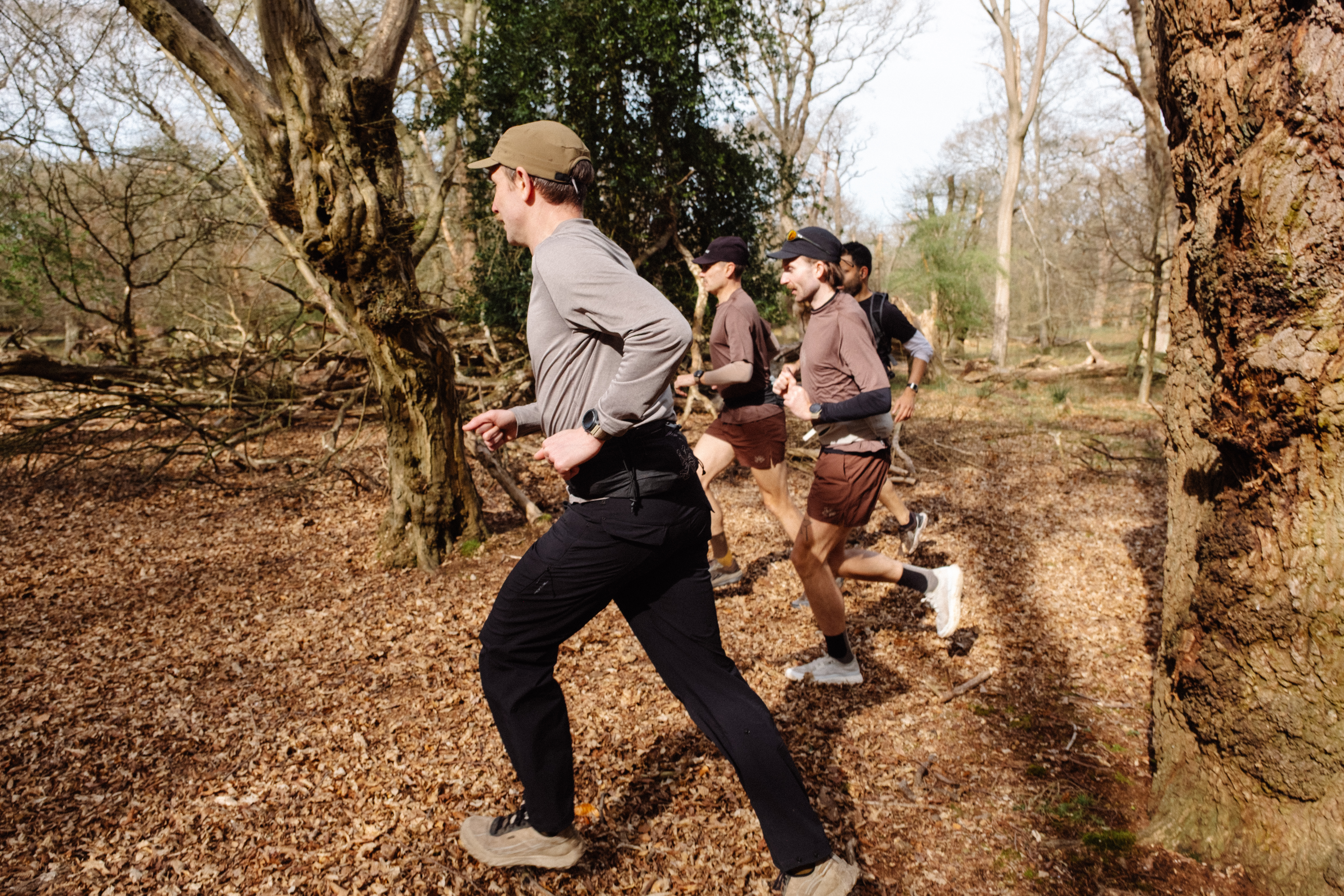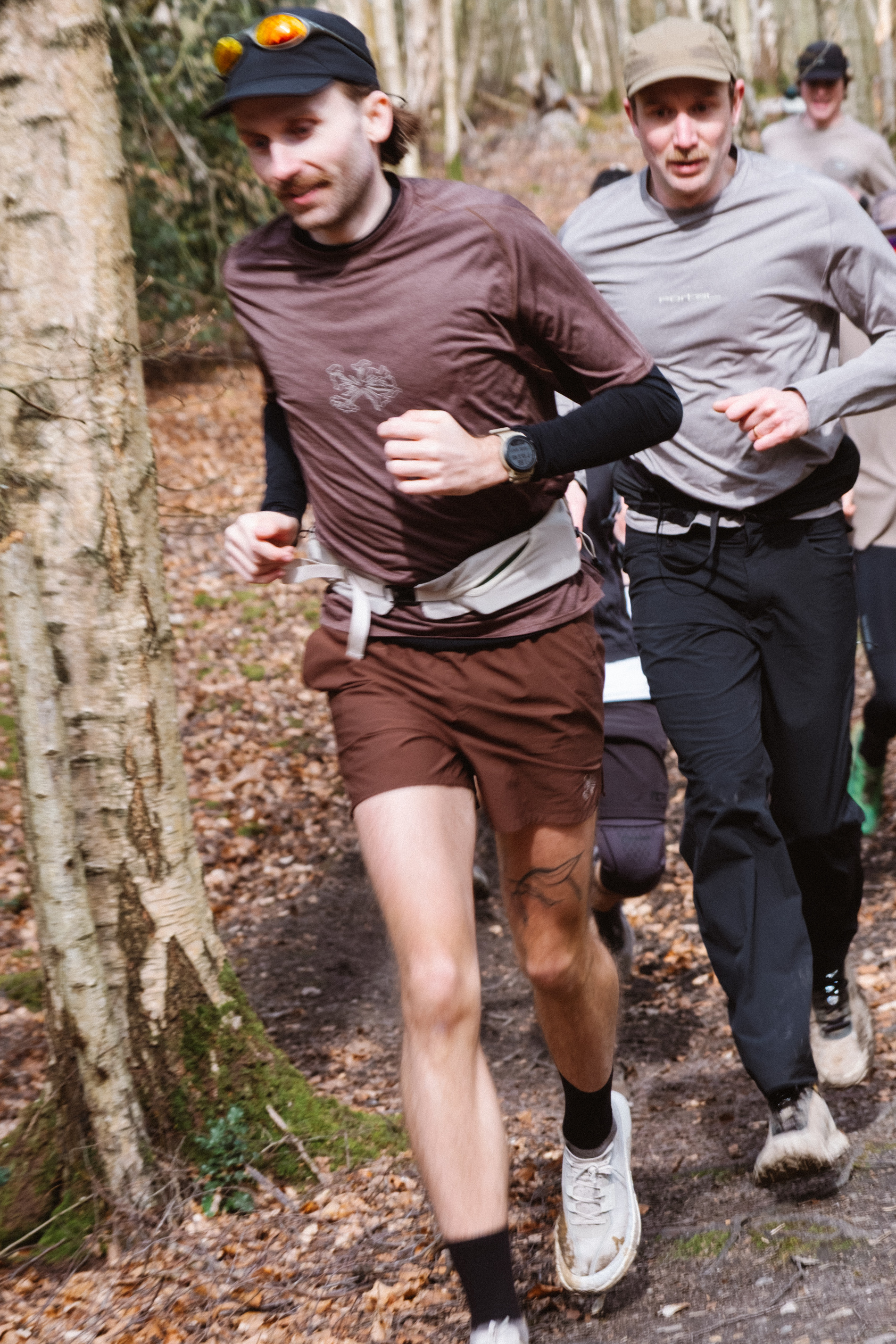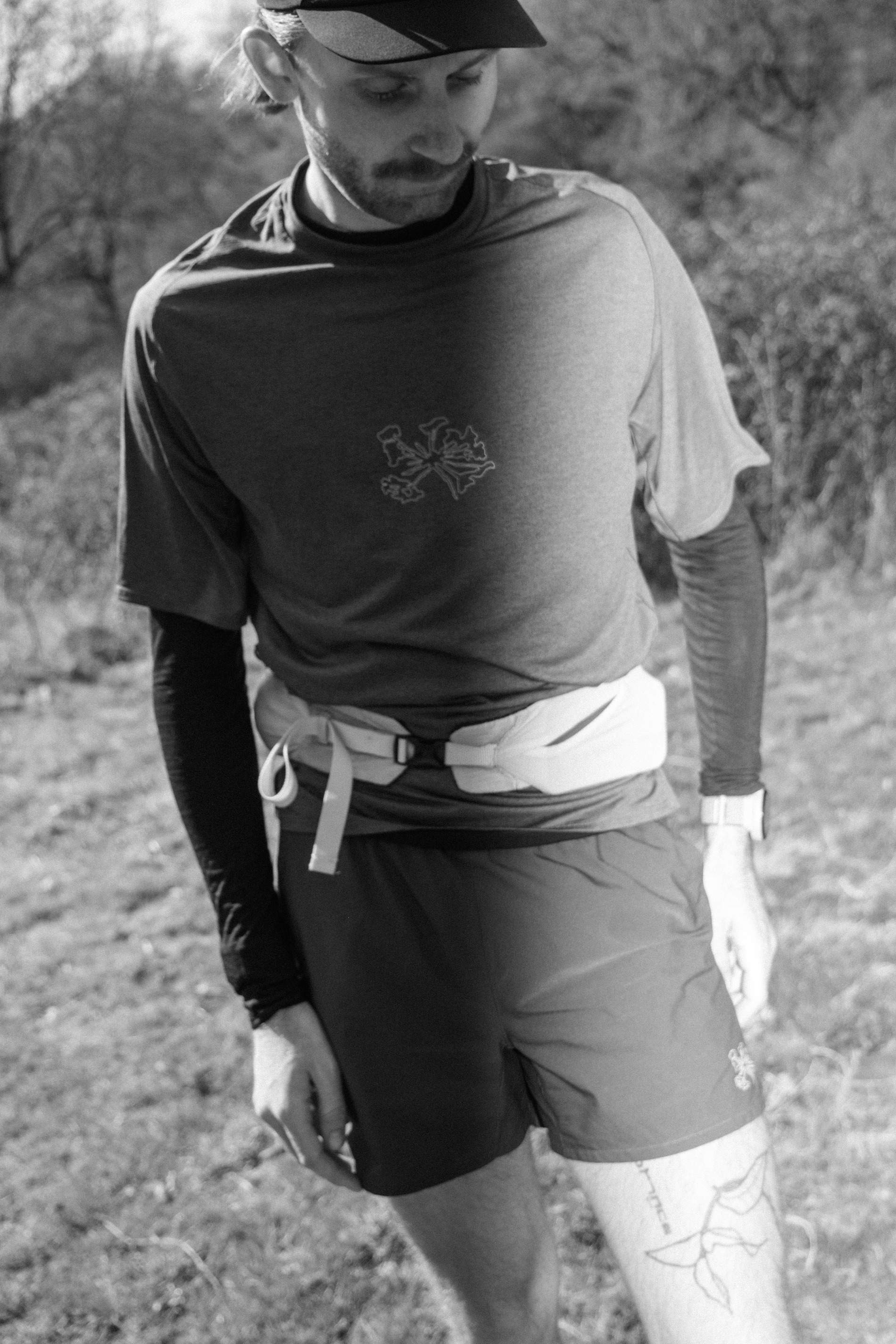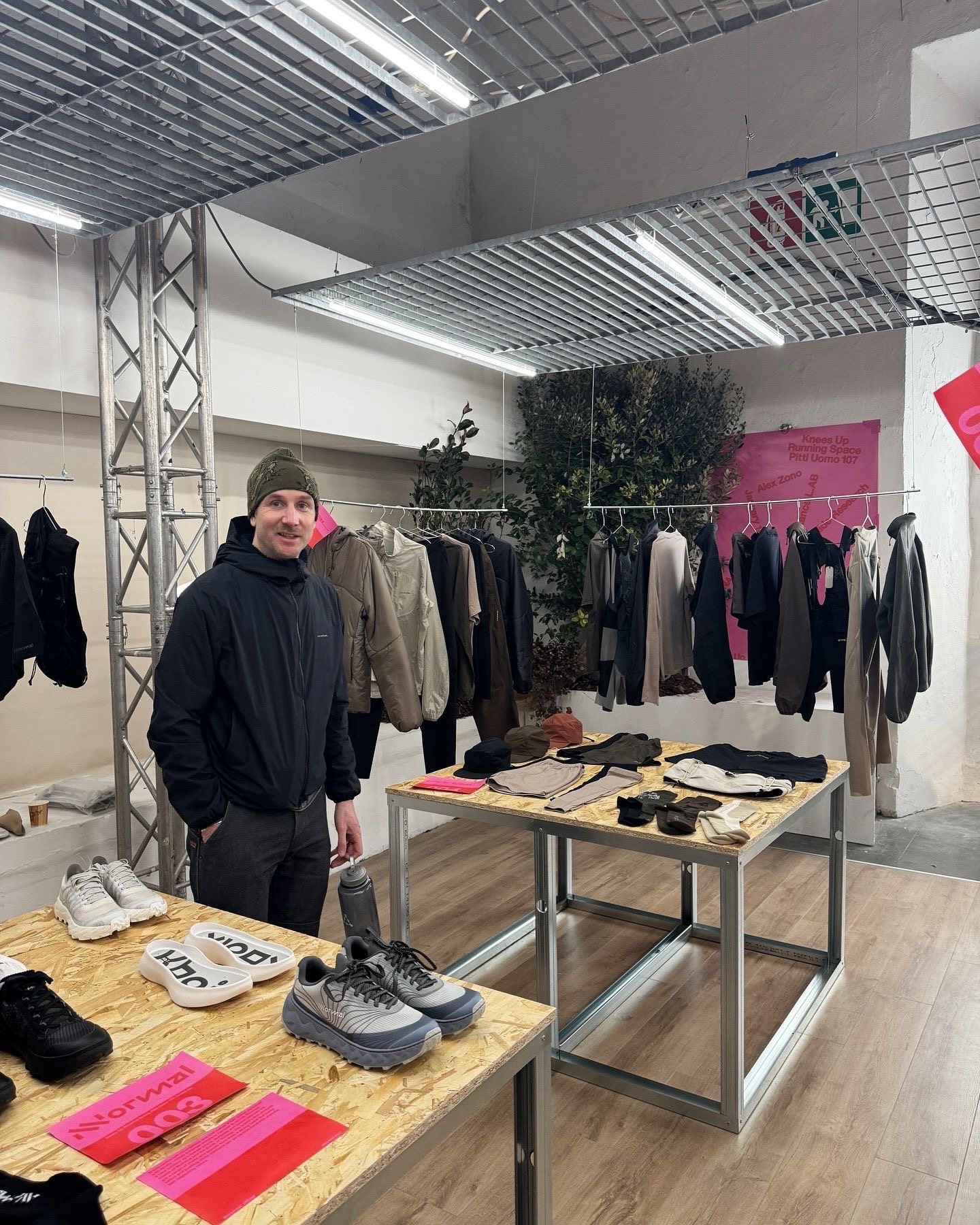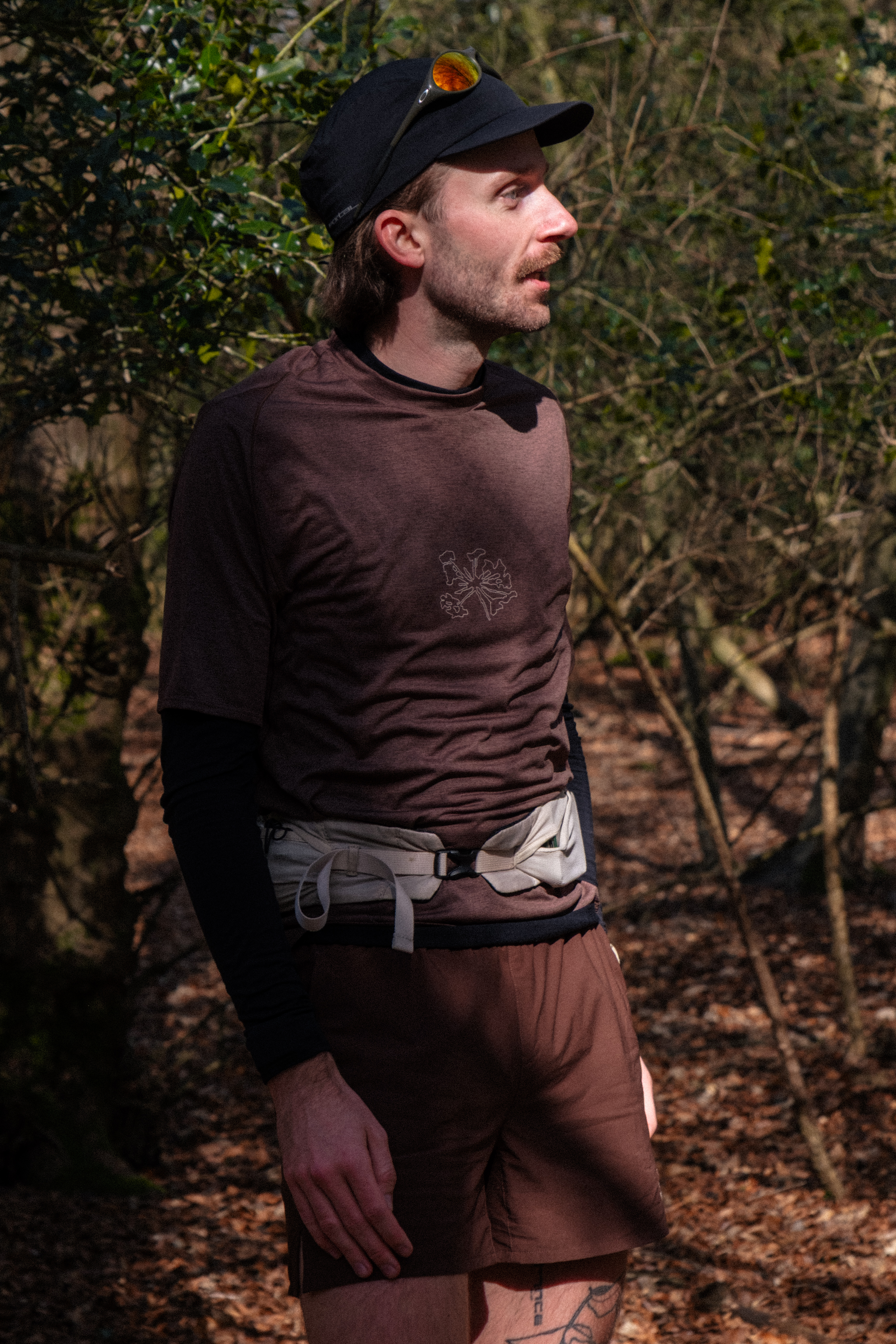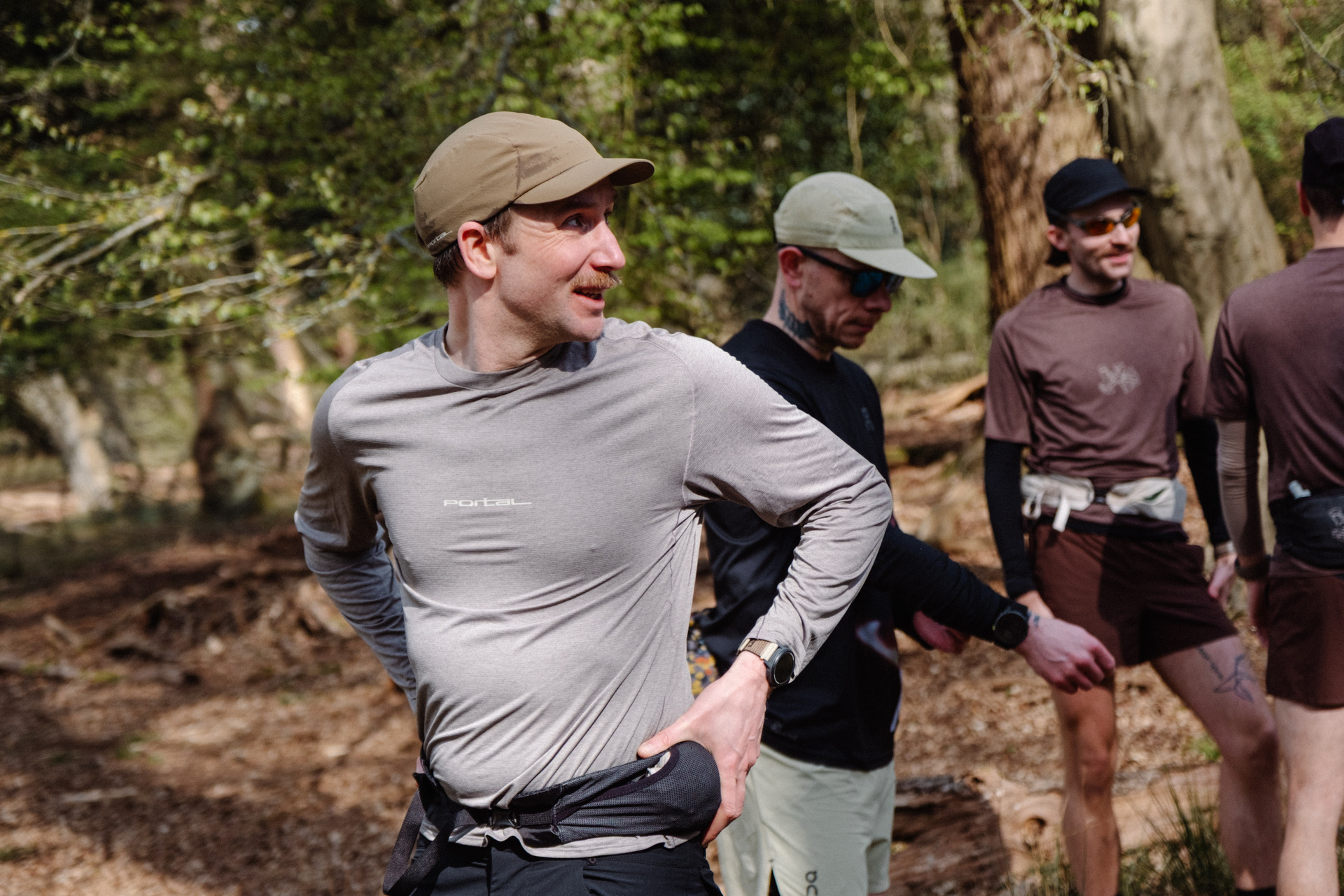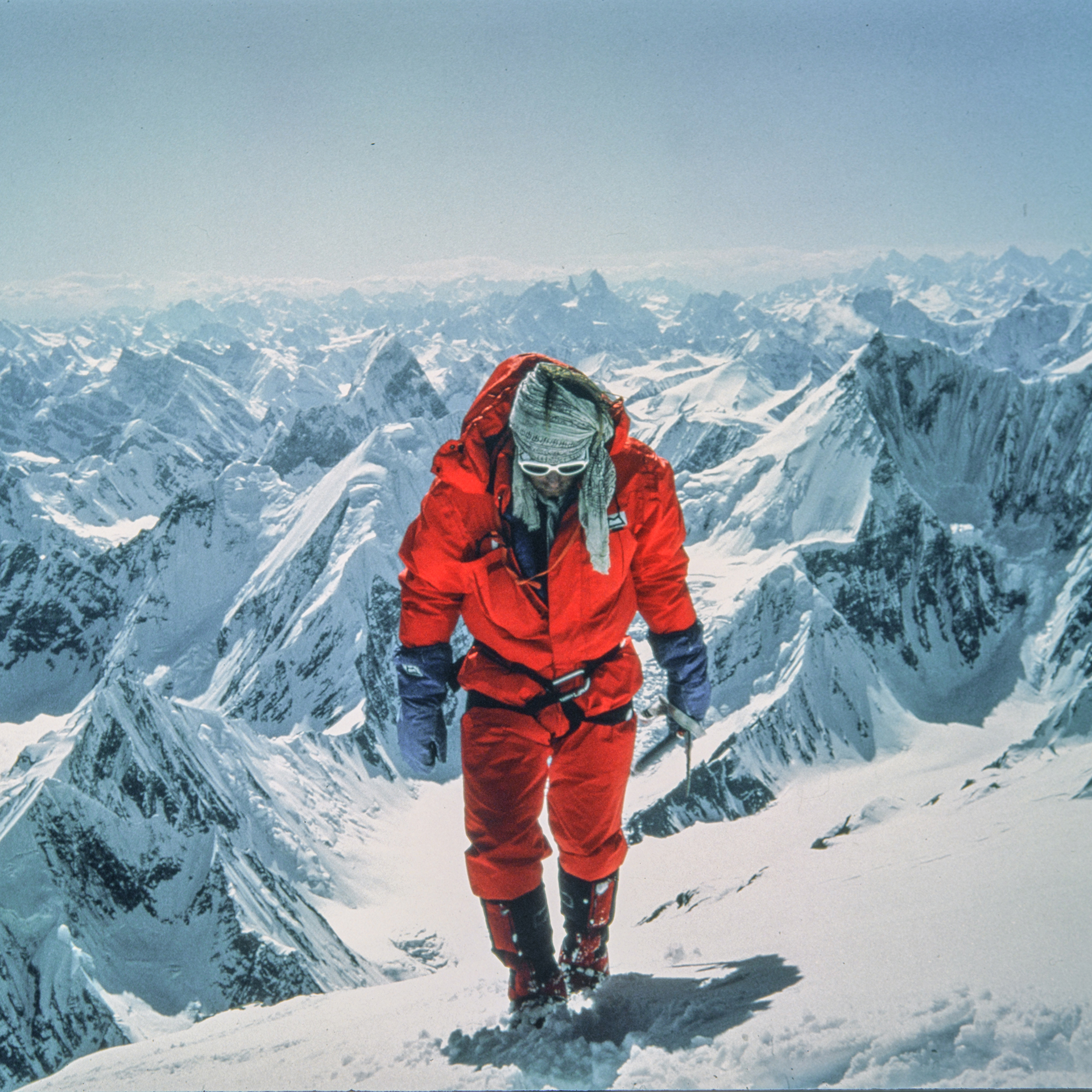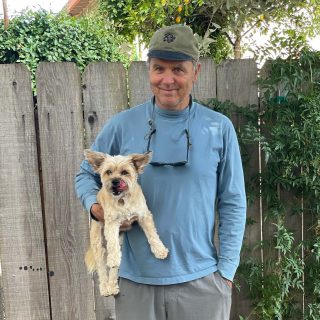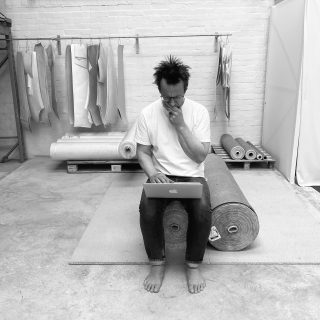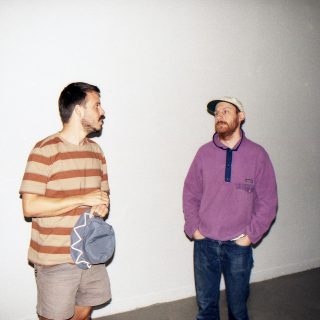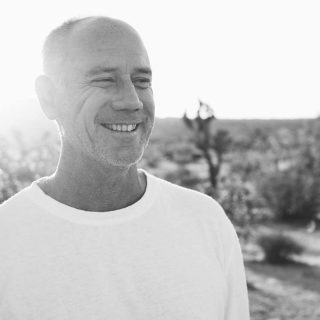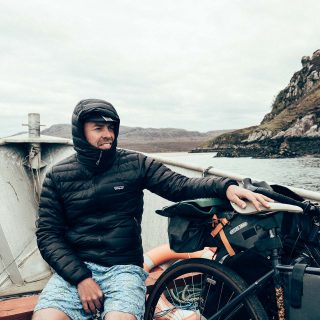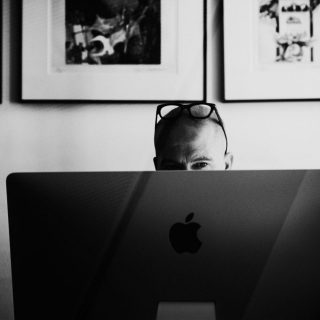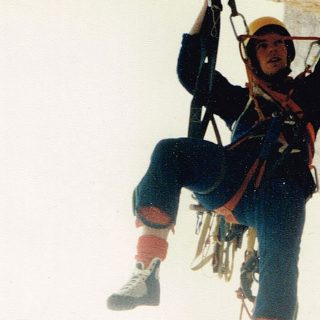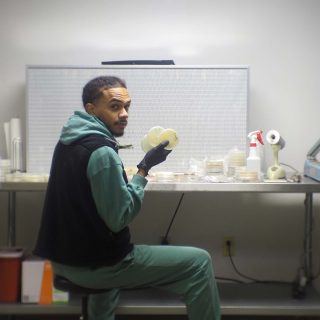An Interview with John and Patrick from Portal
Blurring the boundaries with the Portal co-founders
Founded by John Roberts, Patrick Stangbye, Colin Meredith and Barrie Bloor, Portal is a truly modern take on outdoor clothing, creating wearable, technical clothing that ticks the boxes for cycling, running and hiking all at the same time.
Versatility is the name of the game here. While most brands go down the specialist route, carving niches within niches in the quest for a point of difference, Portal keeps the boundaries intentionally blurred with a collection of functional sportswear that can’t really be pigeonholed.
With the first collection finally out into the wilderness, we called up John and Patrick to talk about sportswear genre fusion, their approach to the outdoors and why the humble act of going outside might be more than a passing trend.
Portal has quite an interesting approach to outdoor clothing, making gear that works for cycling, running and hiking at the same time. Where did that idea come from?
John: The four of us worked on a project together at Rapha—and we really enjoyed working together because we had similar ideas of what we wanted to see. I then left Rapha, but we all kept in touch and kept on talking.
We all felt that there was something missing. We run, we ride, we hike—we’re generally active, and a lot of our wardrobe crosses over a lot of those activities. We might be riding in t-shirts made for running, or wearing something casually which was designed for a different activity, but there wasn’t really a brand putting those things together.
I guess as ‘outdoors people’, a lot of what traditional outdoor brands cater to is mountain activities—it’s all about the vertical, ascending or descending—whereas we found a lot of people were resonating with generally being active and being outdoors, but not necessarily needing a mountain to do that. And from there the brand just grew.
Patrick: Portal belongs to a new generation. We have a lot of respect for those existing outdoor brands that come from climbing or alpinism, but it felt like they were from a different generation. They have amazing product, but their point of view or perspective is rooted in a certain time or place.
Subscribe to our newsletter
That makes sense. It does feel like the boundaries are falling away now, whereas in the past have been very compartmentalised.
Patrick: Quite often it’s very siloed—it’s like “This is the mountain bike collection, and this is the hiking collection.” But these activities do have overlapping products—I know some don’t overlap—but there are lots of things that can work in different scenarios.
John: I think there’s this thing of having to identify as a runner or a hiker—like you can’t be all of those things—you have to subscribe to one of them. Some people really like that, but maybe more so now people want to feel a bit freer and be able to move between the activities, and not feel like they have to look like a cyclist or a runner. And that’s something we want to look at with the brand. There isn’t really anyone talking about movement in this way—but it really resonates with us.
Sometimes that old mentality feels like school—like, “Are you a scally or a mosher?” It’s not how most people live anymore. Whether it’s music or sports or going outside or what food you eat, everyone kind of mixes it up. Being super defined is kind of boring.
John: Yeah—with the brand we want to be real. With traditional outdoor brands, it’s usually about climbing the highest mountains, but most people won’t do that. That can be part of what we do, but getting out into your local forest for a long run is also really enjoyable and also reflects what most people do as an adventure. It doesn’t have to be these death defying feats to be inspirational.
How did you turn this initial idea into a real brand with actual clothing? How do you make clothes that can do all three things well?
Patrick: There were some challenges, but we’ve all got a great interest in this kind of product and are very familiar with clothing and performance product—how things are made and how they work—so it felt quite natural. A lot of the barriers you’d think were there were kind of a false premise anyway—if you make the best tech tee and you optimise the fit, you can find a common ground. If you keep the three activities in mind when designing, you can find a place where it works for all of them.
Sometimes if you just design super specific, for one activity, it still transfers for the two other activities, but it might not be optimal. Sometimes it just needs a micro-adjustment so it works well for all of them. I’ve often run in long-sleeve t-shirts which were made for mountain biking—and they work super well. I chose them because I wanted the fabric that the brand was using, and I took it because I felt comfortable taking it. And the same with taking pants for climbing, and using them for other things.
I don’t even think it’s about finding a ‘middle ground’, because it’s not always that you are compromising on one activity in order to deliver it to another one either—it’s more like a balancing act. If you understand the three things you can make something that works for them all.
And in this collection that’s out now, it’s like a versatile proposition—it’s not the tip of the sword in terms of performance. The tee for cycling works super well, but if you want aerodynamics, you’re probably not going to cycle in a t-shirt. But that’s not what we’re proposing this season. It’s also about understanding what the use case is for the product.
John: I guess it’s different by product too in terms of how we approach that versatility—a cycling bib-short is very specific for cycling. So our starting point is versatility, but if it gets to a point where you actually want to do a 100k bike ride, you’re going to need a bib short, so let’s make a really great bib short for that kind of riding.
It’s the same for running. We launched with a run-short, which actually we’re finding is pretty versatile—we added pockets to them to give them an extra layer of versatility. That was something we were looking for—we couldn’t find a five inch short with a liner and with hand-pockets, so they’re quite unique in that sense. They’re designed as a run-short, but we’re finding that they work for hiking or even swimming.
It’s amazing how just adding one small detail can open something up so much. Just by adding pockets, they’re suddenly so much more versatile. Were there any other details like that you found with what you were creating?
John: We did a lot of work on the fit of the pants. I guess from a development perspective, we’ve all come from working with brands where you’d normally do two or three prototypes—but because this was our first collection, we wanted to get everything really right, so we did five prototypes. The pants were originally more of a hiking pant that could cross over—they’ve got the snaps on the back so you can ride your bike in them. And we’ve seen a lot of people running in those pants—and I’ve naturally started running in them throughout the winter. And that was quite surprising really. They’re even more versatile than we originally thought they’d be. And as far as their silhouette, it’s quite an unseen thing to be running in trousers.
They’re not like a tight pair of Ron Hills—they’re a straight legged, roomy pair of pants.
That’s it. They’re modern, they’re straight, they look really cool—but they’re also really comfortable to be active in as well. So it’s quite surprising to see how we’re using it, and how other people are using them now.
And maybe that’s that ‘boundary blurring’ thing again. You can run in trousers. Or a run doesn’t have to be so defined. Maybe you can run in trousers and meet your friends afterwards. It’s a nicer way to live than having ten uniforms for your life.
John: It’s integrating movement into your day. It needn’t be this thing you have to block out, go and get changed and be someone else to go and do. It’s become something more seamless.
It’s not like “I run every Thursday night.” That’s kind of formulaic. These things can be a part of normal life. Was that a part of the idea behind Portal? You could wear your stuff after the run sat in the park.
Patrick: Yeah—and it’s also the other way around from what you’re saying. It’s definitely valid for people to fit these activities into their everyday life, but also the other way, there are a lot of people who live with these activities—so we wanted to make product that made them feel as cool and comfortable in their active clothes as they do in their casual stuff.
We wanted the active clothing to have the same identity and aesthetic as the casual clothing people wear. When they run in our pants, they feel that attitude that they wouldn’t get in some tapered joggers. They wouldn’t go for lunch in those joggers, so why do they have to run in them? If they’re spending so much time doing these activities, they should also wear products that support their lifestyle aesthetically and functionally.
A lot of people run and train alone, but more and more people are doing them in a social way, and also connecting either before or after maybe in a cafe or a bar, so it’s increasingly important for a lot of people that they feel comfortable and they feel that their clothing is representative of their personality or aesthetic. We build product with performance first, but like we said, we’re a brand that was launched in 2025—it’s coming from this time and place.
How important was the colour palette to all this? It’s not the usual bright colours you find on running gear.
Patrick: A lot of the colours come from the environments where we do the activities—it’s not necessarily about blending in with those landscapes, but if you spend a lot of time in a certain landscape, then those colours become very familiar to you. So there’s the grey from the rock, then browns from the earth and greens from the plants—and then there are blacks and neutral tones. It comes from the environments where the activities are done, so that felt natural, but then at the same time, these are also the colours we’re also more familiar with wearing in our everyday life. Why should we all have to wear fluoro or pastels if we didn’t want to wear that casually.
But this is only the first season. We’re expanding and building a language around the colour, and there are more vibrant colours found in nature—it doesn’t mean we’ll always stay neutral, but I think it’s important that the colours are easy to integrate into what we’re wearing so that people can wear them for a long time—and feel comfortable wearing them for a long time.
The word ‘movement’ crops up a lot with Portal. Can you explain that a bit? What does it mean to you?
John: Being outside and doing something active has always been something that’s been close to me and something I’ve got a lot of physical and mental benefits from. I don’t have to force it now—it’s just part of my day now, and if I don’t do it, it feels like something is missing. I tend to run a bit more in the winter and ride a bit more in the summer. And without it sounding like a buzzword or a cliche, I think if you’re looking for a word to describe something that isn’t specifically one of those things, it’s movement.
So yeah, for me, it’s just part of something that I do—it’s the thing that I build everything else around. It’s not specifically running or cycling, it’s about being outside—getting time for myself—a time to think or not to think—that special time for me. I get that from being outside and being active.
“People now lead busy lives, they’ve got work or family, but you can still find a way to meet while running or riding a bike—it’s a nice place to be social.”
Patrick: For me it’s similar. It’s a kind of micro-adventure in your everyday life. For me, even just commuting across town by bike, that’s a kind of micro-adventure. It’s a way to stay engaged and playful, because you’re participating as an adult. So I find these people who do these activities are more agile and able to adapt to some kind of change. It’s good for your mental health as well as your physical health.
For me on a personal note, I grew up in a house that was just outside the city—so I went out to the forest to explore when I was young—building stuff for bikes or running around the forest or snowboarding or building jumps. I was fortunate enough to grow up around that lifestyle—and it gave me a lot. I’ve spent a lot of time alone doing these activities, but it’s also been a great way to meet people. People now lead busy lives, they’ve got work or family, but you can still find a way to meet while running or riding a bike—it’s a nice place to be social.
I don’t know if you two have felt this—but it feels like people have come back around to this stuff a bit. It felt like everyone rode bikes or did things when they were young, but then gave it up to go to bars or clubs, and now they’ve realised that maybe something was missing—so they’ve got into climbing or running or bikes. It’s like they’ve just remembered that moving feels good.
Patrick: Yeah, the pandemic probably helped for a lot of the outdoor trend that we see—but I think some of those people are now back in the bar. For many people, I think they thought, “Okay, maybe I have been missing something—maybe this is what I’ve been missing?” We kind of touched on this before—but we’re an outdoor brand, and all of the activities have the benefit of being outside—for us the outdoors are everything that happens outside. I think spending time outside in some less man-made landscape is beneficial to people. For someone who spent the last ten years in the club to go and build some berms or jumps in the woods—it might not even be the digging that’s good for them, but maybe just the fact that they’re hanging out outside.
John: I think there’s also a generational shift as well, where pub culture or drinking culture isn’t the same—that’s how people used to connect a few years ago, but it’s not the same anymore, and people are gravitating towards different things.
Definitely. Where do you see this kind of outdoor movement going in the next ten years? Will the boundaries blur even more?
Patrick: Maybe yes and no, in a way. I follow the sports side of things, and people are getting very specialised. So things are mixing, but getting specialised—so we’ll see a fragmentation. The participation rate is so much higher that it’s natural that we’ll see fragmentation. And we don’t know what that fragmentation will give us. There are new sports happening—for example, in iRun there was a thing about Hyrox—that’s a combination of things.
I was thinking surely there’ll be something soon that’s like a mix of bouldering, fell-running and parkour—kind of like how ‘freeride’ was with mountain biking. There’s always something new ready to crop up when things get dull or too formulaic.
John: Thinking about the future and where things are going, there’s been this huge narrative labelling outdoor gear as a trend, with ‘gorpcore’—but I think there’s a lot to unpack with that. The idea that people want to look like they’ve just come off a mountain probably is a trend, and that might go away, but I think people have generally become more comfortable being outdoors, and outdoors clothing brings a lot of that functionality into daily use—which won’t go away.
And then there’s also the real core user who needs this type of product to be comfortable to live the type of lifestyle that they live—and I guess that’s where we fit in as well. There’s a need for technical product if you want to be able to go out and run no matter what the weather, or do a long bike ride. So yeah, just looking at where the market is going and what the future is, I think functional product that keeps people comfortable outdoors is always going to be there, it’s just how it evolves from an aesthetic and functionality perspective.
Sam: I think the thing that’s different about the recent trend towards outdoor clothing is that it’s not enough just to wear the stuff—it’s been about actually doing things. Maybe that’s a symptom of modern social media. I don’t know where I’m going with this, but hopefully that means it kind of roots in a bit harder. They might have been hiking for Instagram, but they’ll probably keep hiking when they realise they enjoy it.
John: Exactly—there’s been this shift to it being about participation. It’s not just wearing a Thrasher hoodie—that’s quite a good example. The Thrasher hoodie became such a symbol, even for those who never skated. But there’s been this shift again where it is about the participation, rather than the look or the status.
Patrick: Yeah, I think a lot of people buy Arc’teryx shell jackets, and then never do anything—but I think there’s been this pressure. I don’t think a lot of those people even wanted to go outside—I just think people are so focussed on authenticity today that some of them probably went on a ski trip to post a photo, so they’d feel more credible wearing it in a city after.
We’re kind of joking with this—and it sounds negative—but even then, that trip might have changed their life. I kind of think some people maybe get into ‘the outdoors’ because of the gear, but then they’ll maybe stick around once they realise how much they enjoy going for a hike or whatever.
Patrick: Yeah, I think that’s the point, right? It opens some doors. I don’t find it all negative because there are so many things in this world that people can aspire to—so if they consider a mountaineer a cool person and want to have the same jacket, at least that says something more positive about values than aspiring to wear a Versace jacket. It says something about how the values in society might be shifting a bit if they’d rather be seen in an expensive mountaineering jacket in a cafe—they’re aspiring to the values of the outdoor brands, rather than the luxury brands.
Definitely. Where do you see Portal going now you’ve finally launched it?
Patrick: We’re just building—we’re just going to continue on the path we’re on—and then it’s about the community too, seeing how people respond to what we’re doing. We hope to have a dialogue with them. And I don’t think that’s fixed. We care about movement, but we also care about cultural movements and how society is moving, so it’s quite open.
We’re about things that happen outside—that’s our definition of ‘outdoors’, so right now we’re more than occupied with the activities we already make for, but there are other ways to move through the landscape that aren’t on our radar currently. One of our partners who is selling Portal in Korea is going on a pack-raft trip with his friend—and I don’t necessarily think we need to design apparel for pack-rafting immediately, but if some of the things we’re doing work well for them on that trip, we very much welcome that.
John: That’s it. We’ve done a lot of work on what we want to be, and what we want to see—so it’s just about continuing that now. We’ll be working with Gore-Tex from Spring/Summer ’26, and that’s an example of the type of product we want to build. We want to build clothing that’s trusted, that’s quality and that’s practical. We want to make product that people can buy into—we don’t want to make something that’s too precious to get dirty.
